Welcome to the October 2020 edition of the Curious Tea subscription! Here’s a closer look at the four exciting new teas that we are sharing with our subscribers this month.
The first light tea this month is a lightly oxidised Four Seasons oolong from Doi Mae Salong in Thailand that has a characteristically floral profile.
The second light tea is a Karigane green tea from Uji in Japan that is also known as Gyokuro Kukicha, a tea that is bold and flavoursome yet finely balanced.
For the dark side of the selection we have a heavily oxidised Four Seasons oolong from the same grower in Doi Mae Salong, featuring complex and warming fruity flavours.
Finally, the last tea we are featuring this month is a bold black tea from Vietnam picked from ancient wild trees that has a classic tannic black tea profile.
- Light: Santikhiri Four Seasons Oolong and Uji Karigane;
- Dark: Santikhiri Four Seasons Ruby Oolong and Suoi Giang Mossy Frog;
- Mixed: Santikhiri Four Seasons Oolong and Santikhiri Four Seasons Ruby Oolong.
Our Discovery subscription boxes contain 10g taster pouches of all of the above mentioned teas. If you are a subscriber you will benefit from a 10% discount on all teas from our tea shop!
Let’s get into further detail on the products featured in our October tea subscription boxes.
Santikhiri Four Seasons Oolong
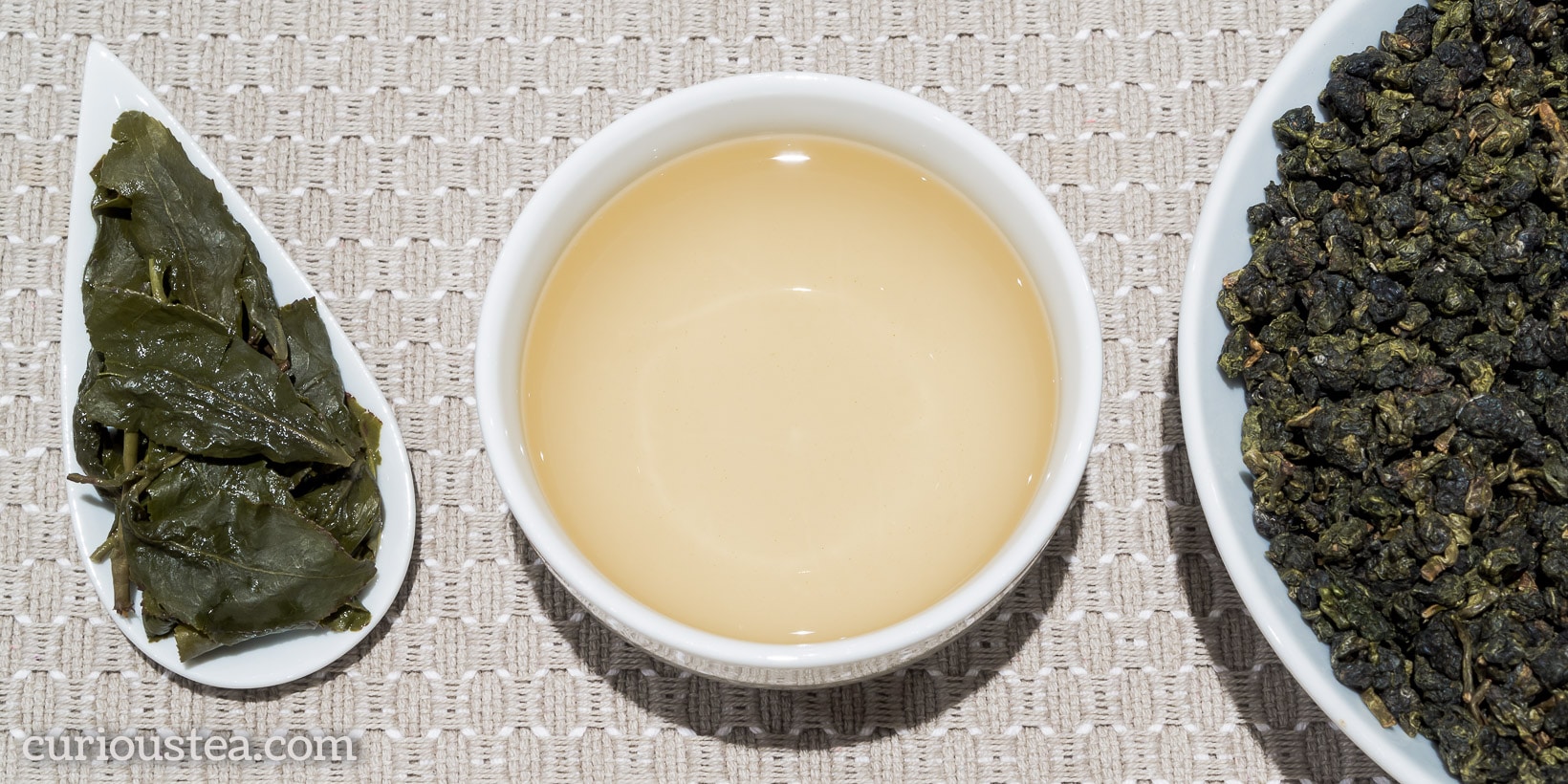
Santikhiri Four Seasons Oolong is a fully organic, lightly oxidised oolong from Doi Mae Salong in northern Thailand. It is a high mountain oolong, grown at an altitude of around 1,200-1,600 metres. It has a refreshing floral character with added verdant and citrus complexity. This lot is from the summer 2020 harvest.
This Santikhiri Four Seasons Oolong comes from an organic plantation located around the village of Santikhiri. The village (formerly Mae Salong) is located in Mae Fa Luang District, around the highlands of Doi Mae Salong mountain, close to the border with Burma and Laos. While previously the area was a centre for the opium trade of the Golden Triangle, since the 1980’s local efforts have resulted in farmers switching to sustainable crops. Doi Mae Salong has now become the centre of a booming tea industry and is home to the best high mountain plantation-grown teas of Thailand.
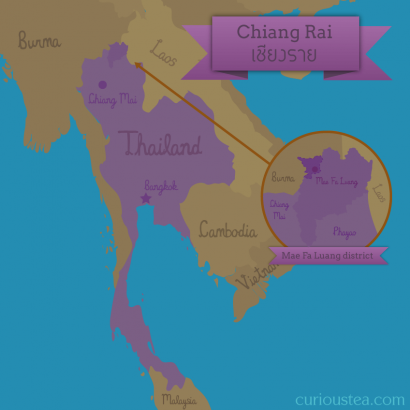
It is made from a Taiwanese Si Ji Chun or ‘Four Seasons’ (四季春) cultivar that is especially favoured for lighter floral oolongs. This cultivar is particularly popular in Taiwan amongst farmers growing teas at lower altitude that are harvested year round to produce lightly oxidised floral oolongs. However, due to the growing conditions of Doi Mae Salong, these tea plants thrive in northern Thailand at higher altitude while still producing rather decent oolong teas year round. When compared to a typical low-grown Taiwanese Four Seasons Oolong, the terroir, higher altitude and different processing does alter the profile to a degree. It results in a tea that is perhaps less expressive on the floral notes, instead highlighting some of the more complex verdant and citrus flavours.
Santikhiri Four Seasons Oolong comes in tightly rolled leaves that open up when brewed. These are mostly green in colour, the result of low-level oxidation. The produced liquor is clear, with a pale gold colour, and a lovely floral aroma. The neutral taste again highlights the light oxidation of this tea, having a verdant and herbaceous character. The tasting notes start on a refreshingly floral aspect, giving way to more drying verdant flavours that are still light and clean. The pleasant and fresh aftertaste has citrus notes that are most reminiscent of orange peel.
Overall, this is an interesting take on a popular Four Seasons Oolong that does away with the punchy floral notes to introduce some refreshing verdant complexity. This month we are also featuring a highly oxidised ‘Ruby’ version of this tea, Santikhiri Four Seasons Ruby Oolong. It has a warming fruity character that provides great contrast.
We suggest brewing at 90°C for 3-4 minutes according to your taste. It can be brewed around 3+ times depending on your taste preferences.
You can also buy Santikhiri Four Seasons Oolong tea in our online shop.
Uji Karigane
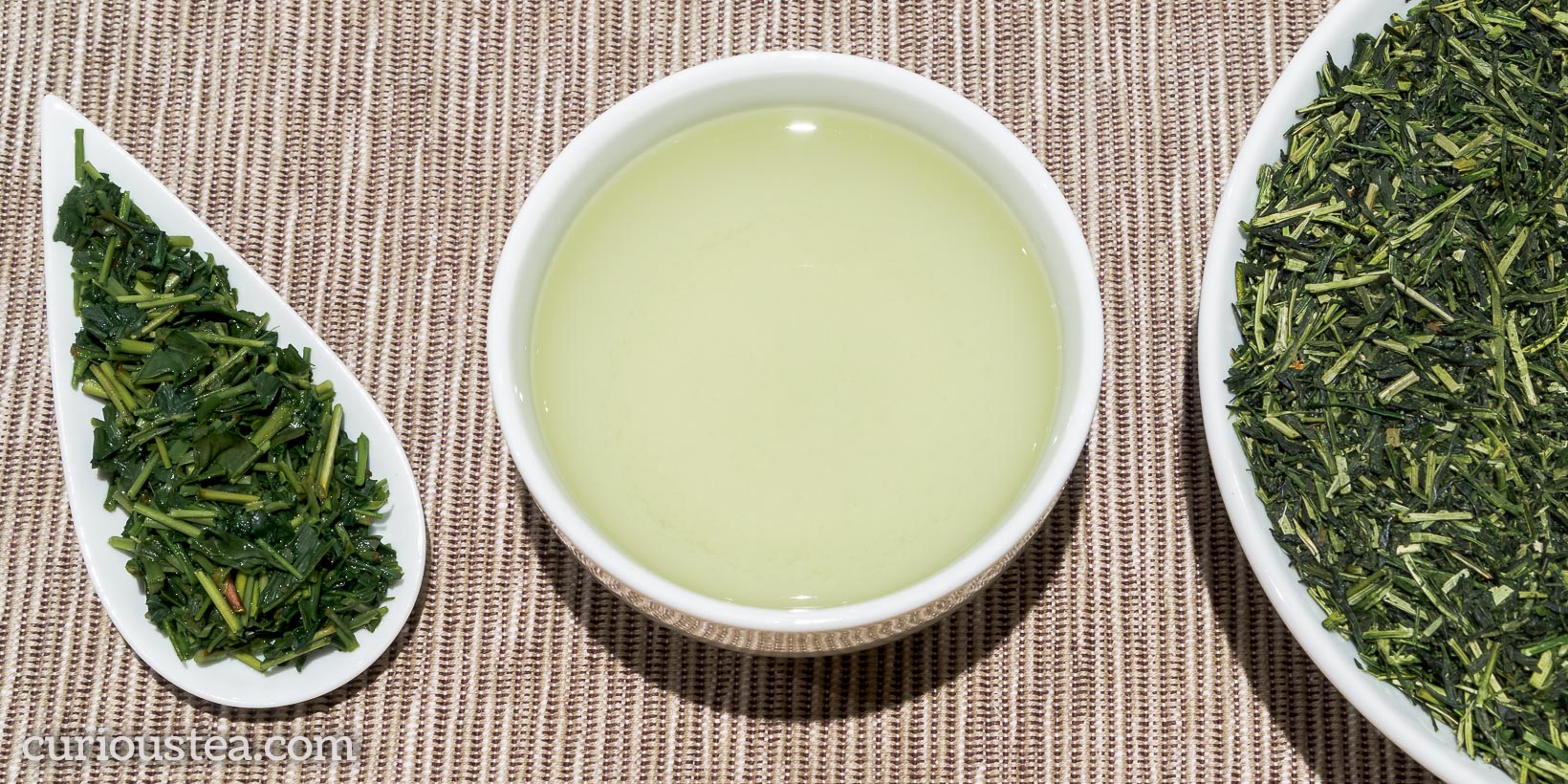
Uji Karigane (宇治田原雁が音) is a fine Japanese gyokuro green tea from Uji Tawara, Kyoto Prefecture, a location said to be the ‘home of Japanese green tea’. The name Karigane translates as wild goose and is one of the names that this type of tea goes by. It is made from a blend of cultivars that are specifically chosen and grown for gyokuro green tea. During the growth the tea trees are also shaded, resulting in a stronger, more flavoursome tea. This Karigane tea is made by blending the fine gyokuro leaves with stems that also come from gyokuro production. This batch is from the May 2019 harvest and had the benefit of approximately 1 year of ageing under controlled conditions in Japan, a method used traditionally to improve flavours of gyokuro and matcha.
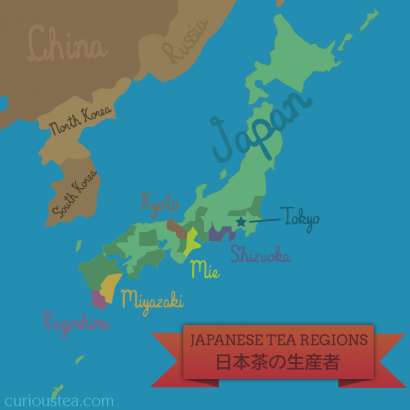
Karigane belongs to a generally broader group of Kukicha teas, which are made from a blend of tea leaves and tea leaf stems. As it is made with the stems, it’s also known as ‘twig tea’. The stems generally contain higher sugar content compared to the leaf, which leads to a more balanced and smoother tea profile. While Kukicha can be made from different types of tea leaves, Karigane tea is made only from leaves and stems from Gyokuro production. Hence this tea is often called Gyokuro Kukicha (玉露茎茶) in Kyoto. It is also known as Shiraore (白折) if it comes from Kyushu.
Uji Karigane undergoes a growing process that is unique to gyokuro and differs from most other tea growing. During growth the tea plants are shaded for about 20 days prior to harvesting that typically occurs in May of each year. High quality tea such as this Uji Karigane is normally shaded using traditional shades made out of bamboo that cover the tea plants from up to 90% of the sun. The covering of the tea forces the tea plants to slow the rate of photosynthesis, leading to higher levels of theanine. This change in chemistry of the leaves creates a much sweeter, mellower taste with a bolder character that is grassy and rich in umami flavours.
Even though this tea was harvested in 2019, we were only able to buy it earlier this year. The reasoning behind this is that traditional Japanese tea companies strongly believe that slightly aged tea is better when it comes to matcha and gyokuro. So in this case our supplier only has the slightly aged Uji Gyokuro, Uji Karigane and Ceremonial Matcha rather than fresh harvests. These high quality teas are stored under perfect storing conditions will undergo a change whereby the flavour will become smoother and mellower.
Our Uji Karigane has attractively coloured dark green leaves that are mixed with the lighter coloured stems. It produces a cloudy yellow-green liquor with a grassy aroma. The flavours are particularly smooth and mouth-coating. The dominant notes are savoury and grassy. The taste starts on the more grassy notes that then progress to more umami flavours with notes of nori seaweed. There is also plentiful smooth creaminess present throughout that makes this tea particularly balanced. The finish is clean, without astringency that leaves a satisfying lightly sweet aftertaste.
You can brew this tea Western style 2.5g of tea per 200-250ml at 70°C fo 1-2 minutes. But for best authentic results we find 10g per 250ml of water to be the correct amount for this tea. Brew using good quality water that has been heated to 70°C and using traditional Japanese teaware. As you are using lower temperature water, preheating your teaware prior to brewing is a particularly good idea. In our tasting, a first infusion of 90 seconds followed by multiple infusions at around 60 seconds, worked particularly well. As always, keep increasing steeping time until no flavour is left.
You can also buy Uji Karigane green tea in our online shop.
Santikhiri Four Seasons Ruby Oolong
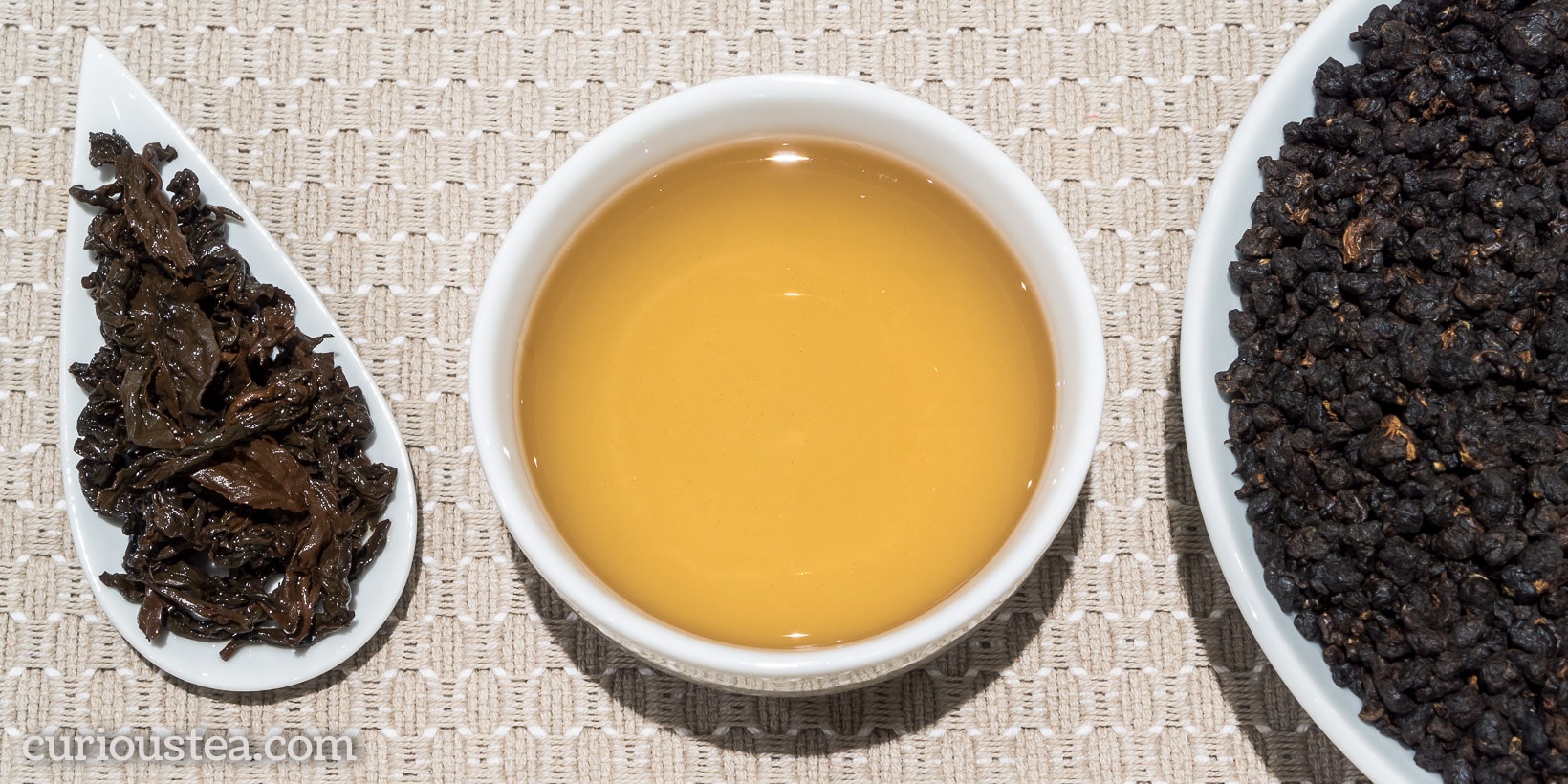
Santikhiri Four Seasons Ruby Oolong is a fully organic, highly oxidised oolong from Doi Mae Salong in northern Thailand. It is a high mountain oolong, grown at an altitude of around 1,200-1,600 metres. It has a warming, fruity character with mineral and honey notes. This lot is from the summer 2020 harvest and is grown and produced by the same garden as our lightly oxidised Santikhiri Four Seasons Oolong above.
This Santikhiri Four Seasons Ruby Oolong comes from an organic plantation located around the village of Santikhiri. The village (formerly Mae Salong) is located in Mae Fa Luang District, around the highlands of Doi Mae Salong mountain, close to the border with Burma and Laos. While previously the area was a centre for the opium trade of the Golden Triangle, since the 1980’s local efforts have resulted in farmers switching to sustainable crops. Doi Mae Salong has now become the centre of a booming tea industry and is home to the best high mountain plantation-grown teas of Thailand.
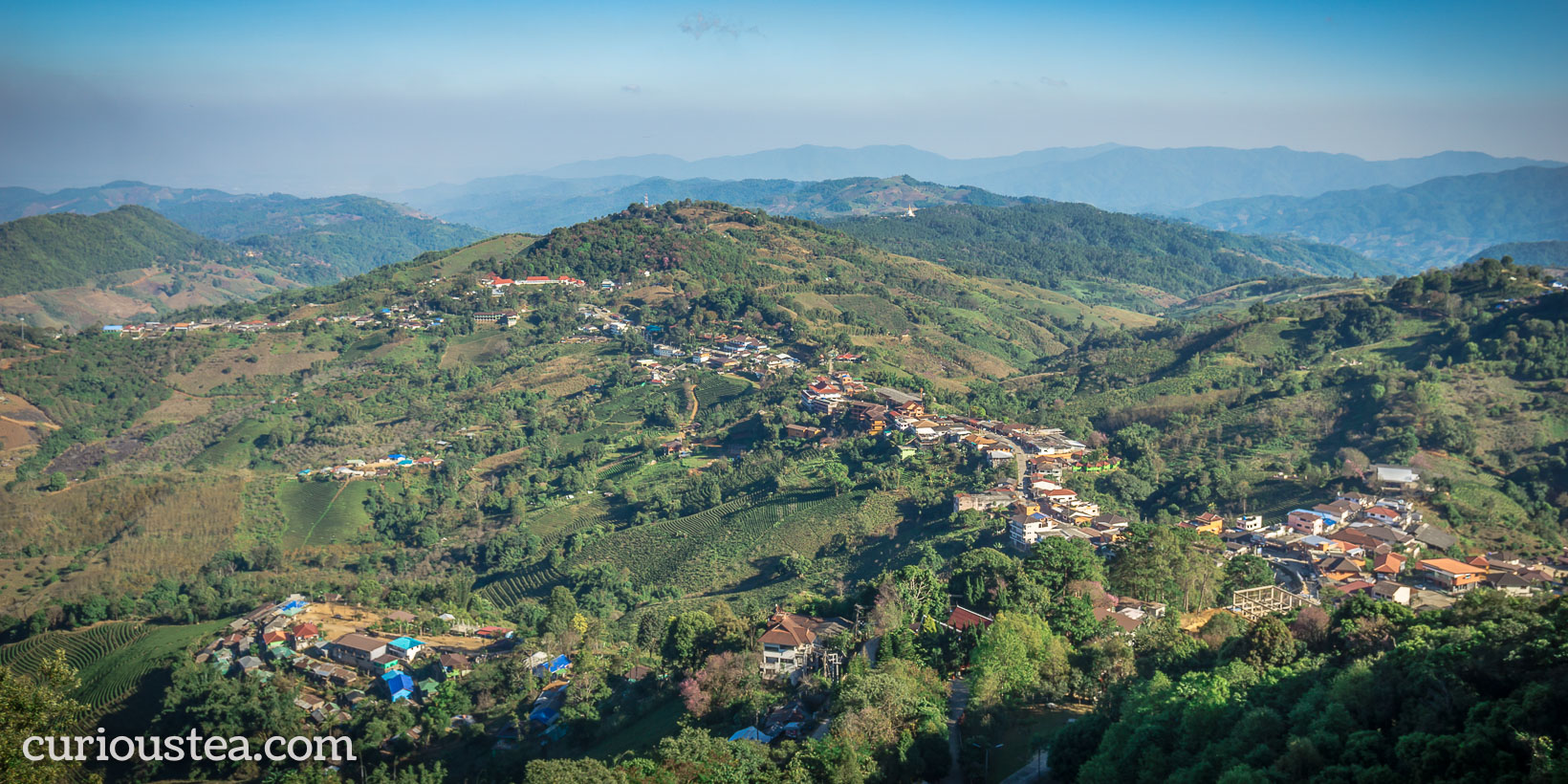
It’s made from a Taiwanese Si Ji Chun or ‘Four Seasons’ (四季春) cultivar that is especially favoured for lighter floral oolongs. It is particularly popular in Taiwan amongst farmers growing teas at lower altitude that are harvested year round to produce lightly oxidised floral oolongs. However, due to the growing conditions of Doi Mae Salong, these tea plants thrive in northern Thailand at higher altitude while still producing rather decent oolong teas year round. The grower of this tea put a further twist on it by increasing the oxidation level. The high degree of oxidation results in a complex tea with a fruity character that sits much closer to a black tea. However, unlike our Santikhiri Ruby Ruan Zhi black tea, this one is still firmly rooted in the oolong tea category. The best point of comparison for this tea would be our popular Four Seasons Red Oolong from Taiwan.
This Santikhiri Four Seasons Ruby Oolong comes in very tightly rolled leaves that resemble black pearls. The addition of ‘Ruby’ in the name clearly hints at the colour of both the leaves and the liquor of this highly oxidised oolong. As the leaves begin to open up when brewed, they produce a golden amber liquor with good clarity and brightness. It has a full-bodied aroma with a lightly roasted, honey and mineral fragrance that resembles stewed fruits. When compared to the aroma, the taste is lighter, with a warming wild honey and slightly mineral flavour. There are notes of herbs, sultanas and stewed fruits. The aftertaste is clean and comforting. This is a very easy tea to drink, a pleasurable choice for a relaxing afternoon.
We suggest brewing at 90°C for 3-4 minutes according to your taste. It can be brewed around 3+ times depending on your taste preferences. As the leaves are very tightly rolled we suggested a slightly longer brewing time on the first infusion to allow the leaves to open up for subsequent shorter steeps.
You can also buy Santikhiri Four Seasons Ruby Oolong tea in our online shop.
Suoi Giang Mossy Frog
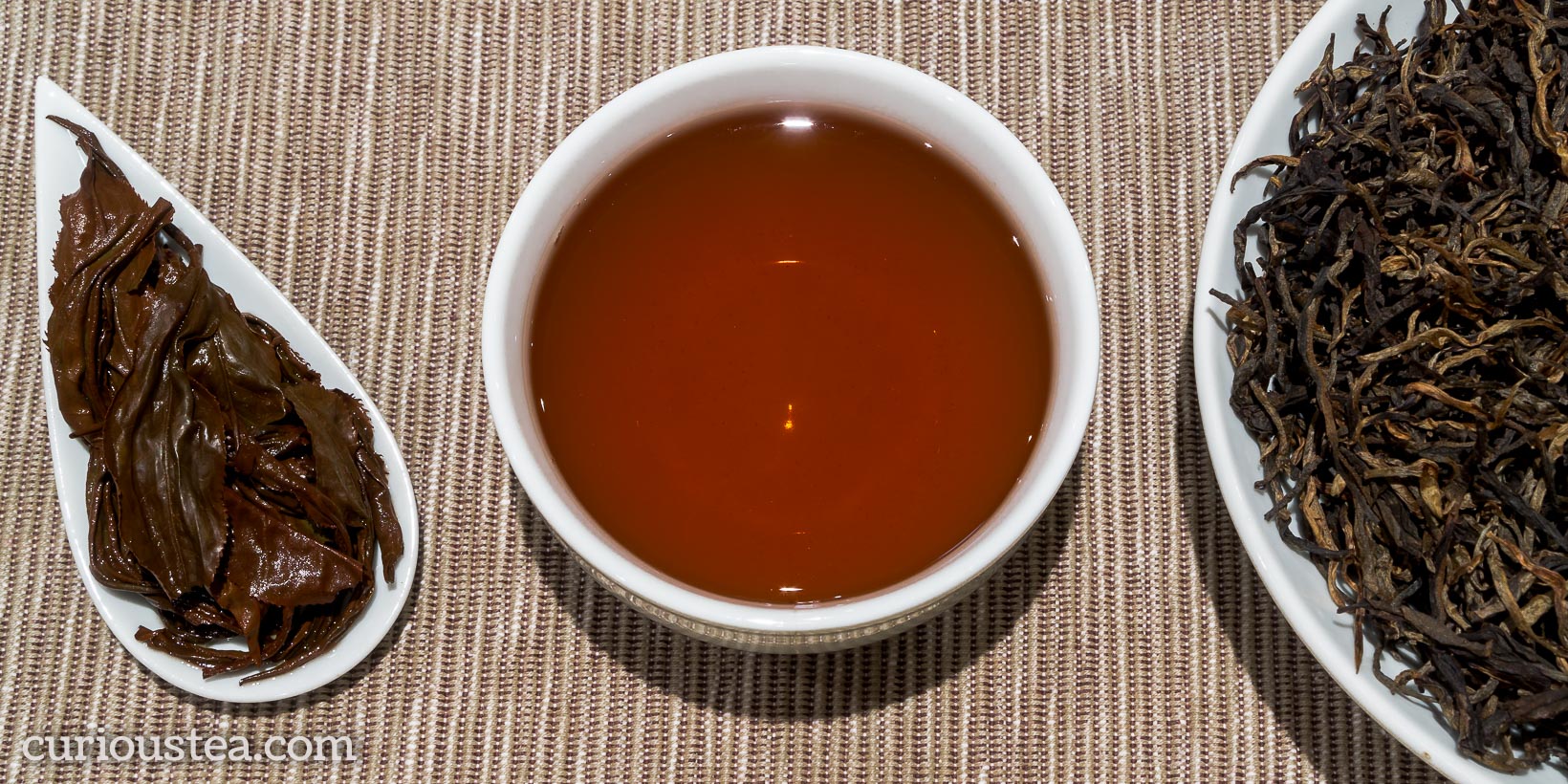
Our Suoi Giang Mossy Frog black tea is plucked by local hill tribes around Suoi Giang, Yen Bai Province. It is harvested from wild assamica trees that grow in ancient forests at an altitude of 1,400 metres and above. These trees grow on the high forested mountain slopes, completely naturally without any human interference; so under perfect organic conditions. This tea was harvested and processed in August 2019 but it has been allowed to rest for 1 year to mellow the flavours.
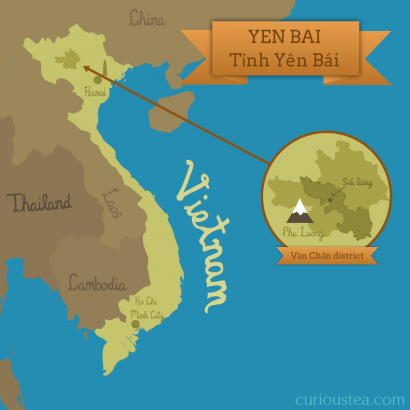
Suoi Giang Mossy Frog is a true wild tea, plucked and processed entirely by the Hmong ethnic families. The Hmong ethnic group started immigrating to this area of Vietnam from the 18th century and came from Southern parts of modern day China, including from Yunnan. As they travelled south they brought with them tea processing techniques and knowledge from China. Much of the wild grown tea is sold to China to be processed into pu-erh, but some small amounts are processed locally in Vietnam using traditional orthodox production methods. This black tea is from the same provenance as our Suoi Giang Five Penny green tea.
The tea gets its name from a species of frog found in the ancient forests of northern Vietnam. Unfortunately, the frog’s habitat is under threat due to deforestation. This same loss of forest also threatens the ancient wild tea trees that are found throughout the region.
The carefully-sorted large wiry leaves of this Suoi Giang Mossy Frog produce a richly coloured liquor with a light mineral aroma. The smooth taste has a classic black tea profile. There are stony, mineral and malty notes. It features well-rounded tannins present throughout that point squarely at the assamica origins. This tea is a perfect choice for those who like their black teas stronger, similar in style to Assam.
We suggest brewing parameters of 90°C for 2-3 minutes according to your taste. This tea can be brewed multiple times.
You can also buy Suoi Giang Mossy Frog black tea in our online shop.
We really do hope that you enjoy the tea selection for October and are looking forward to the selection in our next box. Our November box will feature a Bai Mu Dan mini cake white tea, an unusual Taiwanese green tea, a high mountain Gui Fei Oolong from Shan Lin Xi and a Muscatel Darjeeling from Gopaldhara!
If reading this has made you curious about our teas, but you don’t yet subscribe to a monthly tea selection, you can sign up for our tea boxes in just a few clicks. We ship worldwide from London, UK.
We always love to hear from you, so if you have any questions, suggestions or just want to chat about tea, email us at contact@curioustea.com, via our Facebook page or via Twitter.
You can also follow us on Instagram for pretty tea photos.
Happy tea discoveries!

